T-cell Acute Lymphoblastic Leukemia Treatment Market Size
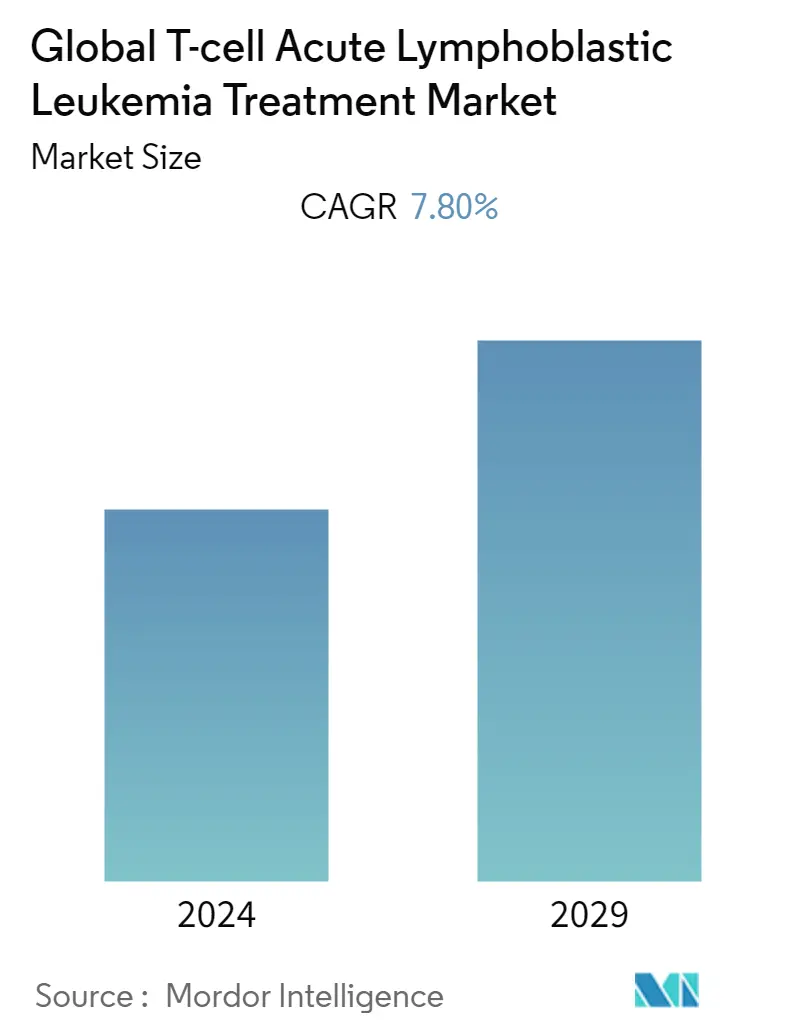
| Study Period | 2019 - 2029 |
| Base Year For Estimation | 2023 |
| CAGR | 7.80 % |
| Fastest Growing Market | North America |
| Largest Market | Asia Pacific |
| Market Concentration | Low |
Major Players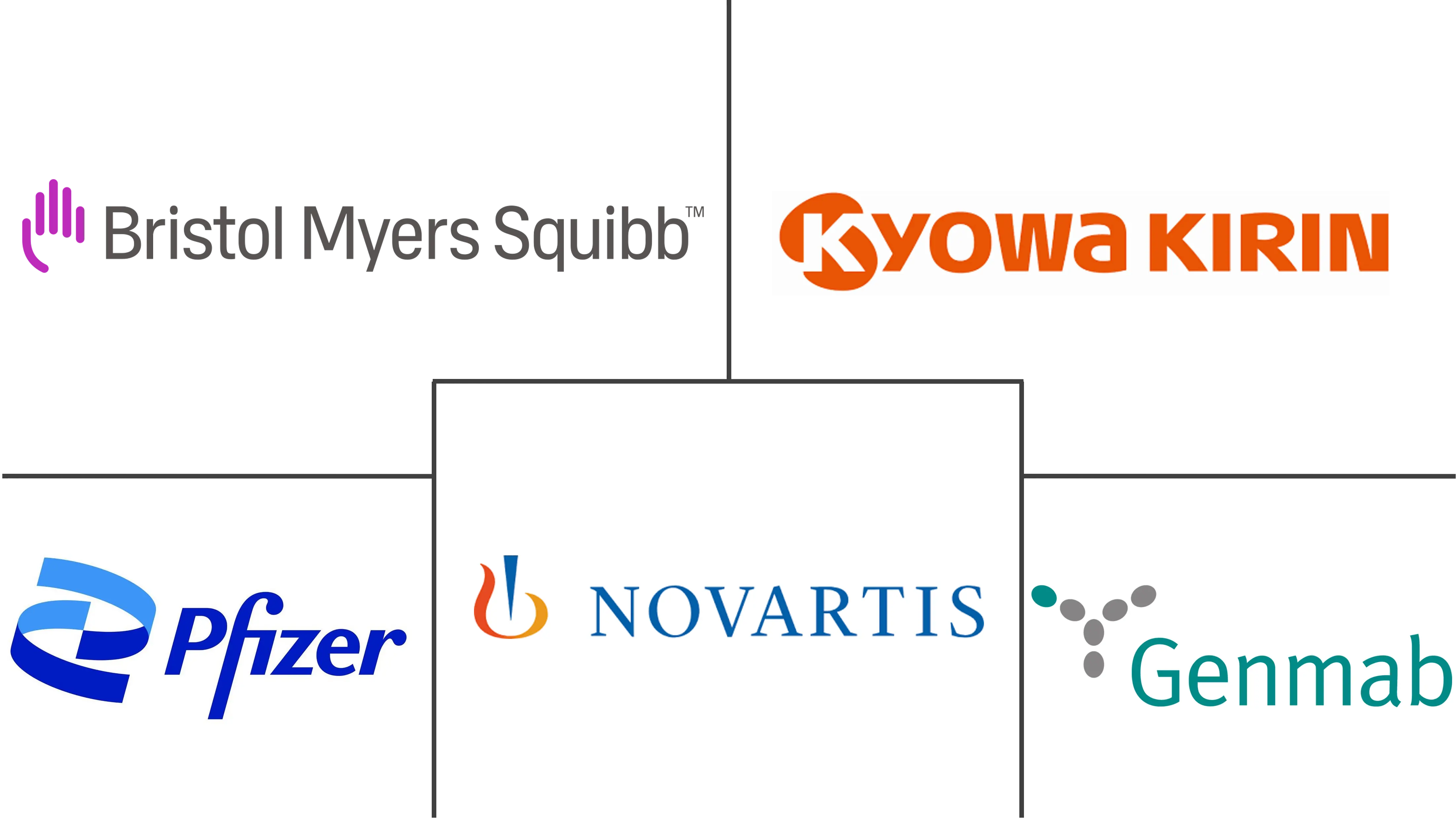
*Disclaimer: Major Players sorted in no particular order |
T-cell Acute Lymphoblastic Leukemia Treatment Market Analysis
The T-cell Acute Lymphoblastic Leukemia Treatment Market is anticipated to grow with a CAGR of nearly 7.8% over the forecast period.
The Covid-19 pandemic has had a significant impact on the market studied. Cancer treatments such as chemotherapy typically damage the patient's immune system. This weakened immune system of the target population is expected to create a risk of Covid-19 infection. Various research has been conducted to find the impact of Covid 19 on the ALL patients. According to an article published in October 2021, titled 'Frequency, Clinical Characteristics and Outcome of Adults With Acute Lymphoblastic Leukemia and COVID 19 Infection in the First vs. Second Pandemic Wave in Spain', the frequency and mortality of COVID-19 infection were high in adults with acute lymphoblastic leukemia. This is expected to have created a demand for the availability of treatment for ALL drugs and therapies which is further expected to bolster the studied market growth. Therefore, the pandemic is expected to significantly impact the studied market growth.
Certain factors that are propelling the market growth are the increasing prevalence of T-cell acute lymphoblastic leukemia and the growing research and development expenditures on cancer therapeutics.
The rising burden of t-cell acute lymphoblastic leukemia is the key factor driving the market growth. For instance, as per an article published in August 2021, titled 'T-Cell Acute Lymphoblastic Leukemia: Biomarkers and Their Clinical Usefulness', T-cell acute lymphoblastic leukemia (T-ALL) accounts for 25% of cases of ALL in adults and 15% of cases in children. This is anticipated to fuel the market growth over the forecast period.
Additionally, according to an article published in October 2021, titled 'Donor-Derived CD7 Chimeric Antigen Receptor T Cells for T-Cell Acute Lymphoblastic Leukemia: First-in-Human, Phase I Trial', it has been observed that among 20 patients with relapsed or refractory T-cell acute lymphoblastic leukemia (r/r T-ALL) who received anti-CD7 CAR T cells single infusion, CD7 CAR T cells from donors demonstrated effective growth and achieved a high complete remission rate with manageable safety profile. Thus, the increasing clinical studies for evaluating the efficacy of the drugs for treating patients with T-cell acute lymphoblastic leukemia is expected to increase the availability of drugs for treatment, thereby propelling the market growth.
However, the stringent regulatory scenario for drug development and the high cost associated with the treatment are likely to hinder market growth over the forecast period.
T-cell Acute Lymphoblastic Leukemia Treatment Market Trends
This section covers the major market trends shaping the T-Cell Acute Lymphoblastic Leukemia Treatment Market according to our research experts:
Chemotherapy Segment Expects to Register a High CAGR Over the Forecast Period
The chemotherapy segment is expected to witness significant growth in T-cell acute lymphoblastic leukemia over the forecast period owing to the factors such as the rising prevalence of t-cell lymphoblastic leukemia, and increasing usage of chemo-drugs in the treatment.
According to an article published in May 2021, titled 'The New Therapeutic Strategies in Pediatric T-Cell Acute Lymphoblastic Leukemia', the patients with newly diagnosed T-ALL are currently treated with intensive chemotherapy, which has been occasionally supplemented with cranial radiotherapy (CRT). Additionally, as per an article published in August 2020, titled 'Children's Oncology Group AALL0434: A Phase III Randomized Clinical Trial Testing Nelarabine in Newly Diagnosed T-Cell Acute Lymphoblastic Leukemia', it has been observed that the addition of nelarabine to augmented Berlin-Frankfurt-Muenster (ABFM) therapy increased disease-free survival (DFS) without increasing toxicity in children and young adults with newly diagnosed T-ALL. This is expected to have a positive impact on the studied market growth over the forecast period.
Thus, owing to the aforementioned factors, the market is expected to grow significantly during the forecast period.
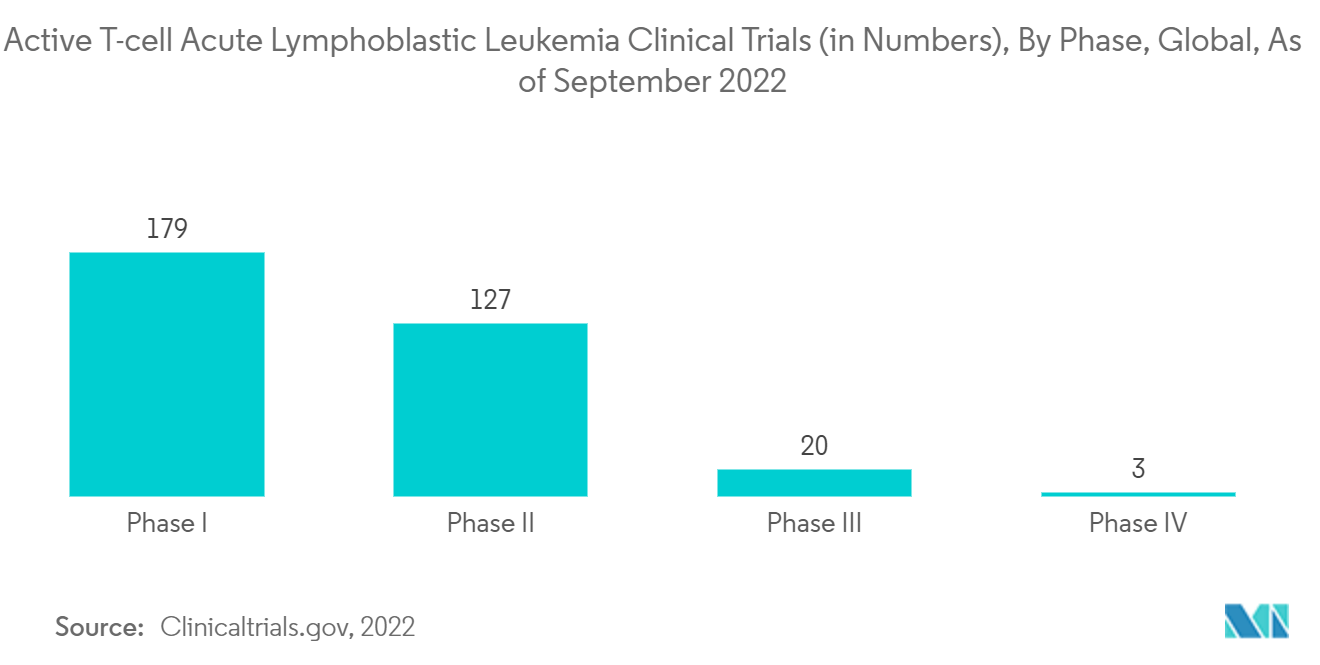
North America Dominates the Market and Expects to do Same Over the Forecast Period
North America is anticipated to witness growth over the forecast period and dominate the market. Among other countries in the region, the United States is leading the market due to high healthcare expenditure, research and development activities, and a rising prevalence of T-cell acute lymphoblastic leukemia.
The rising burden of acute lymphoblastic leukemia is the key factor driving the market growth in the region. For instance, as per the 2022 statistics published by the American Cancer Society, about 6,660 new cases of ALL (3,740 in males and 2,920 in females) are expected to be diagnosed in the United States in 2022. In addition, as per the same source, approximately 1,560 deaths from ALL (880 in males and 680 in females) are expected to be reported in the United States in 2022. Thus, the increasing number of acute lymphoblastic leukemia is expected to increase the risk of developing T-cell acute lymphoblastic leukemia in patients which in turn is anticipated to increase the demand for effective and safe drugs and other treatment options for treating patients with t-cell acute lymphoblastic leukemia.
In addition, according to the Organization for Economic Co-operation and Development (OECD), in June 2022, United States healthcare spending in 2021 was 17.8% of the total GDP of the country and Mexico's health spending as a share of GDP was 6.2% in 2020, This is expected to positively impact market growth. Additionally, as per the Centers for Medicare and Medicaid Services, National Health spending is projected to grow at an average annual rate of 5.4% for 2019-2028 and to reach USD 6.2 trillion by 2028. As national health expenditure is projected to grow 1.1% points faster than gross domestic product per year on average over 2019-2028 the health share of the economy is projected to rise by 19.7% in 2028.
Thus, owing to the aforementioned factors, the market is expected to grow significantly during the forecast period.
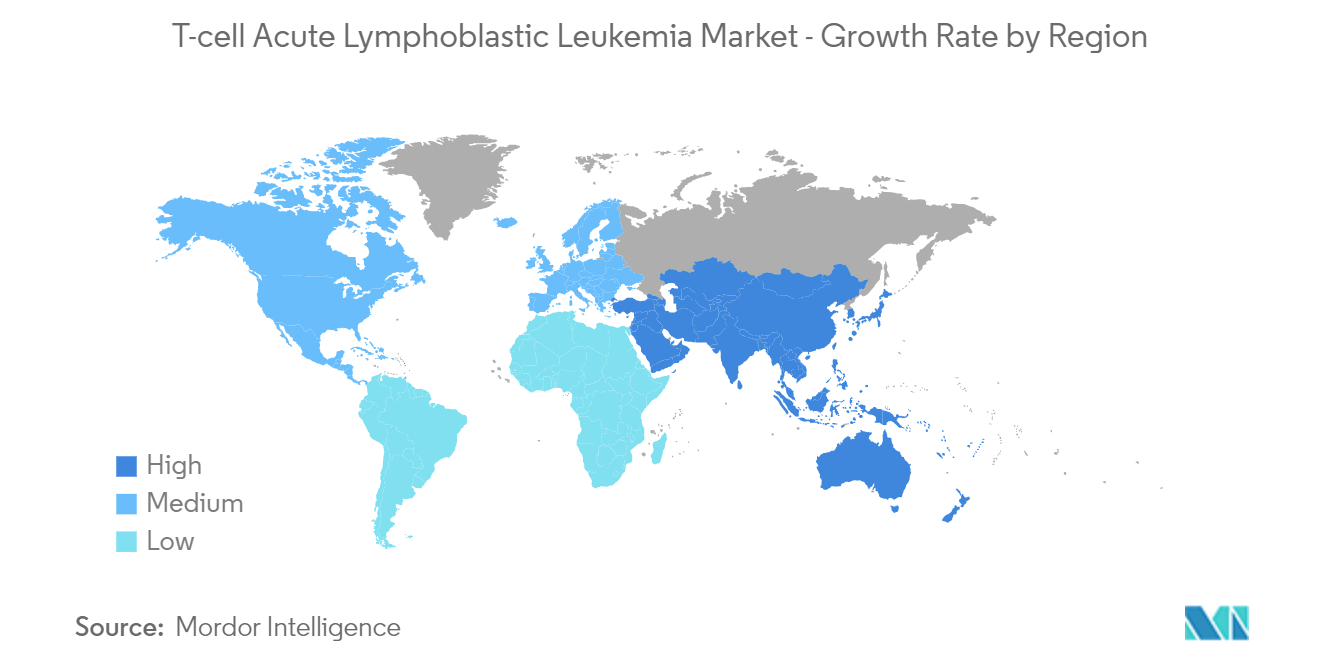
T-cell Acute Lymphoblastic Leukemia Treatment Industry Overview
Currently, many private companies are focusing on the development and introduction of novel therapeutics. Additionally, extensive research and development activities are being initiated by most of the market players, government organizations and academic research institutes. Some of the key innovations in the market are: In 2017, Researchers at the Spanish National Cancer Research Centre (CNIO) have discovered a genetic alteration in specific gene, known as Capicua, has been inactivated and that is directly involved in at least 10% of cases of one of the most common cancers in children, T-cell acute lymphoblastic leukemia.
T-cell Acute Lymphoblastic Leukemia Treatment Market Leaders
-
Bristol Myer Squibb Company
-
Genmab A/S
-
Novartis AG
-
Pfizer Inc.
-
Kyowa Kirin Co., Ltd.
*Disclaimer: Major Players sorted in no particular order
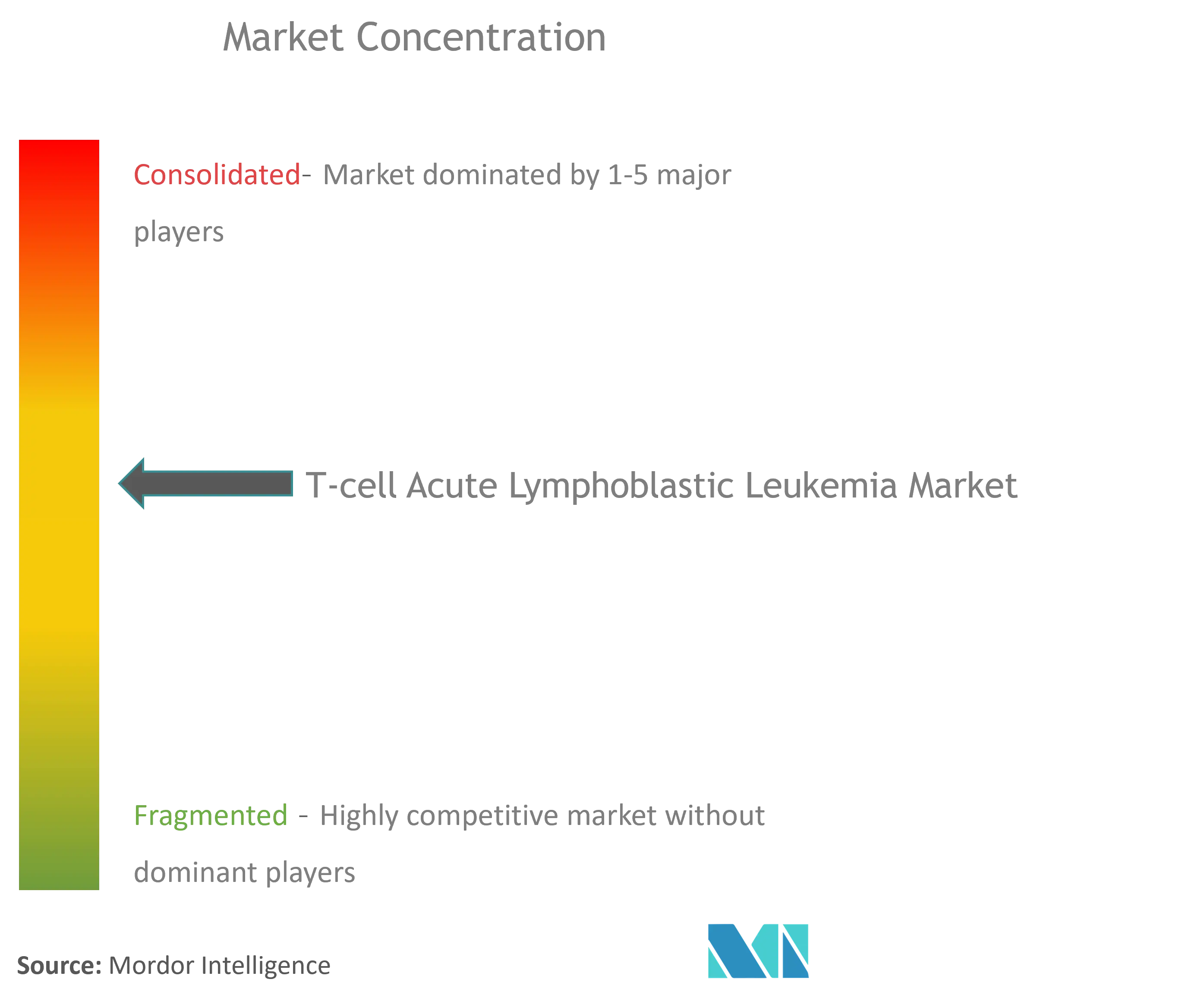
T-cell Acute Lymphoblastic Leukemia Treatment Market News
- In July 2022, European Medicines Agency (EMA) Committee for Medicinal Products for Human Use (CHMP) issued a positive opinion for Kite's Tecartus (brexucabtagene autoleucel) for the treatment of adult patients 26 years of age and above with relapsed or refractory (r/r) B-cell precursor acute lymphoblastic leukemia (ALL)
- In October 2021, the Food and Drug Administration (FDA) approved the use of the CAR T-cell therapy brexucabtagene autoleucel (Tecartus)for adults with B-cell precursor ALL that has not responded to treatment (refractory) or have returned after treatment (relapsed). The approval makes brexucabtagene the first CAR T-cell therapy approved for adults with ALL.
T-cell Acute Lymphoblastic Leukemia Treatment Market Report - Table of Contents
1. INTRODUCTION
- 1.1 Study Assumptions and Market Definition
- 1.2 Scope of the Study
2. RESEARCH METHODOLOGY
3. EXECUTIVE SUMMARY
4. MARKET DYNAMICS
- 4.1 Market Overview
-
4.2 Market Drivers
- 4.2.1 Increasing Prevalence of T-cell Acute Lymphoblastic Leukemia Market
- 4.2.2 Growing Research and Development Expenditure on Cancer Therapeutics
-
4.3 Market Restraints
- 4.3.1 Stringent Regulatory Scenario for the Drug Approvals
- 4.3.2 High Cost Asscoiated with the Treatment
-
4.4 Porter's Five Force Analysis
- 4.4.1 Threat of New Entrants
- 4.4.2 Bargaining Power of Buyers/Consumers
- 4.4.3 Bargaining Power of Suppliers
- 4.4.4 Threat of Substitute Products
- 4.4.5 Intensity of Competitive Rivalry
5. MARKET SEGMENTATION (Market Size by Value - USD million)
-
5.1 By Type of Therapy
- 5.1.1 Chemotherapy
- 5.1.2 Radiation therapy
- 5.1.3 Stem cell transplant
- 5.1.4 Others
-
5.2 By End User
- 5.2.1 Hospitals
- 5.2.2 Cancer and Radiation Therapy Centers
- 5.2.3 Others
-
5.3 Geography
- 5.3.1 North America
- 5.3.1.1 United States
- 5.3.1.2 Canada
- 5.3.1.3 Mexico
- 5.3.2 Europe
- 5.3.2.1 Germany
- 5.3.2.2 United Kingdom
- 5.3.2.3 France
- 5.3.2.4 Italy
- 5.3.2.5 Spain
- 5.3.2.6 Rest of Europe
- 5.3.3 Asia-Pacific
- 5.3.3.1 China
- 5.3.3.2 Japan
- 5.3.3.3 India
- 5.3.3.4 Australia
- 5.3.3.5 South Korea
- 5.3.3.6 Rest of Asia-Pacific
- 5.3.4 Middle-East and Africa
- 5.3.4.1 GCC
- 5.3.4.2 South Africa
- 5.3.4.3 Rest of Middle-East and Africa
- 5.3.5 South America
- 5.3.5.1 Brazil
- 5.3.5.2 Argentina
- 5.3.5.3 Rest of South America
6. COMPETITIVE LANDSCAPE
-
6.1 Company Profiles
- 6.1.1 Bristol Myer Squibb Company
- 6.1.2 Gilead Sciences (Kite Pharma)
- 6.1.3 Kyowa Kirin Co., Ltd.
- 6.1.4 Erytech Pharma
- 6.1.5 F. Hoffmann-La Roche Ltd
- 6.1.6 Genmab AS
- 6.1.7 GlaxoSmithKline
- 6.1.8 Novartis AG
- 6.1.9 Pfizer Inc.
- 6.1.10 Spectrum Pharmaceuticals
- *List Not Exhaustive
7. MARKET OPPORTUNITIES AND FUTURE TRENDS
** Subject To AvailablityT-cell Acute Lymphoblastic Leukemia Treatment Industry Segmentation
As per the scope, T-cell acute lymphoblastic leukemia (T-ALL) is a specific type of leukemia. It is a variant of acute lymphoblastic leukemia (ALL), with features similar to some types of lymphoma. It affects the lymphoid-cell-producing stem cells, in particular, a type of white blood cell called T lymphocytes whereas ALL usually affects B-lymphocytes. The T-cell Acute Lymphoblastic Leukemia Treatment Market is segmented by Type of Therapy (Chemotherapy, Radiation therapy, Stem cell transplant, and Others), End User (Hospitals, Cancer and Radiation Therapy Centers, and Others), and Geography (North America, Europe, Asia-Pacific, Middle East, and Africa, and South America). The market report also covers the estimated market sizes and trends for 17 different countries across major regions globally. The report offers the value (in USD million) for the above segments.
| By Type of Therapy | Chemotherapy | |
| Radiation therapy | ||
| Stem cell transplant | ||
| Others | ||
| By End User | Hospitals | |
| Cancer and Radiation Therapy Centers | ||
| Others | ||
| Geography | North America | United States |
| Canada | ||
| Mexico | ||
| Geography | Europe | Germany |
| United Kingdom | ||
| France | ||
| Italy | ||
| Spain | ||
| Rest of Europe | ||
| Geography | Asia-Pacific | China |
| Japan | ||
| India | ||
| Australia | ||
| South Korea | ||
| Rest of Asia-Pacific | ||
| Geography | Middle-East and Africa | GCC |
| South Africa | ||
| Rest of Middle-East and Africa | ||
| Geography | South America | Brazil |
| Argentina | ||
| Rest of South America |
T-cell Acute Lymphoblastic Leukemia Treatment Market Research FAQs
What is the current Global T-cell Acute Lymphoblastic Leukemia Treatment Market size?
The Global T-cell Acute Lymphoblastic Leukemia Treatment Market is projected to register a CAGR of 7.80% during the forecast period (2024-2029)
Who are the key players in Global T-cell Acute Lymphoblastic Leukemia Treatment Market?
Bristol Myer Squibb Company, Genmab A/S, Novartis AG, Pfizer Inc. and Kyowa Kirin Co., Ltd. are the major companies operating in the Global T-cell Acute Lymphoblastic Leukemia Treatment Market.
Which is the fastest growing region in Global T-cell Acute Lymphoblastic Leukemia Treatment Market?
North America is estimated to grow at the highest CAGR over the forecast period (2024-2029).
Which region has the biggest share in Global T-cell Acute Lymphoblastic Leukemia Treatment Market?
In 2024, the Asia Pacific accounts for the largest market share in Global T-cell Acute Lymphoblastic Leukemia Treatment Market.
What years does this Global T-cell Acute Lymphoblastic Leukemia Treatment Market cover?
The report covers the Global T-cell Acute Lymphoblastic Leukemia Treatment Market historical market size for years: 2019, 2020, 2021, 2022 and 2023. The report also forecasts the Global T-cell Acute Lymphoblastic Leukemia Treatment Market size for years: 2024, 2025, 2026, 2027, 2028 and 2029.
T-cell Acute Lymphoblastic Leukemia Treatment Industry Report
Statistics for the 2024 T-cell Acute Lymphoblastic Leukemia Treatment market share, size and revenue growth rate, created by Mordor Intelligence™ Industry Reports. T-cell Acute Lymphoblastic Leukemia Treatment analysis includes a market forecast outlook 2029 and historical overview. Get a sample of this industry analysis as a free report PDF download.



